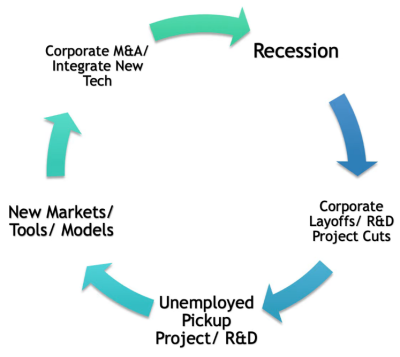If you haven’t noticed, this is an absolutely fantastic time to be a hacker. The components are cheap, the software is usually free, and there’s so much information floating around online about how to pull it all together that even beginners can produce incredible projects their first time out of the gate. It’s no exaggeration to say that we’re seeing projects today which would have been all but impossible for an individual to pull off ten years ago.
But how did we get here, and perhaps more importantly, where are we going next? While we might arguably be in the Golden Age of DIY, creative folks putting together their own hardware and software is certainly nothing new. As for looking ahead, the hacker and maker movement is showing no signs of slowing down. If anything, we’re just getting started. With a wider array of ever more powerful tools at our disposal, the future is very literally whatever we decide it is.
In her talk at the 2019 Hackaday Superconference, “The Future is Us: Why the Open Source And Hobbyist Community Drive Consumer Products“, Jen Costillo not only presents us with an overview of hacker history thus far, but throws out a few predictions for how the DIY movement will impact the mainstream going forward. It’s always hard to see subtle changes over time, and it’s made even more difficult by the fact that most of us have our noses to the proverbial grindstone most of the time. Her presentation is an excellent way for those of us in the hacking community to take a big step back and look at the paradigm shifts that put such incredible power in the hands of so many.
Hacker History
To get the whole picture, Jen starts all the way back in the 1970s with the Homebrew Computer Club. In those heady days, some of the biggest developments in home computing were literally taking place in hacker’s garages. By the 1980s, the GCC project was in full swing, giving hobbyists their own toolchain to develop and debug software without having to purchase an expensive license. A few short years later, Linus Torvalds made his now iconic post on the comp.os.minix newsgroup looking for feedback on the free “hobby” operating system he’d been working on.
Moving on to the 2000s, we see the rise of Maker culture. Companies like SparkFun and Adafruit pop up to provide high-tech components for DIYers, Makerbot makes it possible for the average consumer to 3D print parts at home, Kickstarter provides an influx of cash to anyone with a good idea, and Maker Faire proves there’s a huge number of people out there who are curious about building things themselves. The stage is set for another revolution in how hardware and software is created, and this time it’s on a scale that would have been inconceivable a few decades prior.
All of these milestones have been critically important for our community, and when presented in a timeline like …read more
Source:: Hackaday

